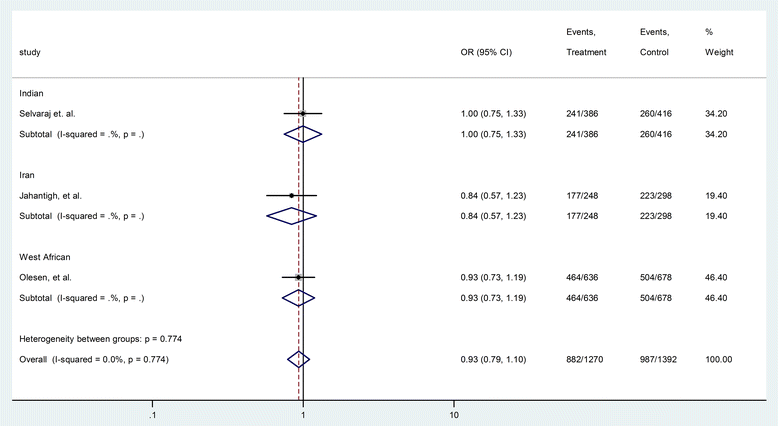Association between toll-like receptors 9 (TLR9) gene polymorphism and risk of pulmonary tuberculosis: meta-analysis
- PMID: 25948535
- PMCID: PMC4460768
- DOI: 10.1186/s12890-015-0049-4
Association between toll-like receptors 9 (TLR9) gene polymorphism and risk of pulmonary tuberculosis: meta-analysis
Abstract
Background: Previous studies indicated that the single nucleotide polymorphisms (SNPs) in TLR9 gene might be associated with Tuberculosis (TB) risk. However, the results are inconsistent and inconclusive.
Methods: 1745 articles from four databases were involved in our study. A meta-analysis on the associations between the seven polymorphisms and TB risk was carried out by comparison using different genetic models.
Results: In this systematic review 8 studies from seven English articles were analyzed. Our results showed that rs352139 is significantly associated with TB risk (AA vs. AG, OR 0.77, 95% CI 0.65-0.92, P = 0.004). In the ethnic subgroup analysis, Indonesians with AA genotype had a decreased susceptibility while Mexicans with GG allele had an increased risk.
Conclusions: The meta-analysis indicated that rs352139 polymorphism might be associated with decreased TB risk in Indonesians whereas increased risk in Mexicans. Whether the observed association was due to causal effect needs to be further studied.
Figures






References
-
- Global tuberculosis report 2013 [http://apps.who.int/iris/bitstream/10665/91355/1/9789241564656_eng.pdf]
Publication types
MeSH terms
Substances
LinkOut - more resources
Full Text Sources
Other Literature Sources

